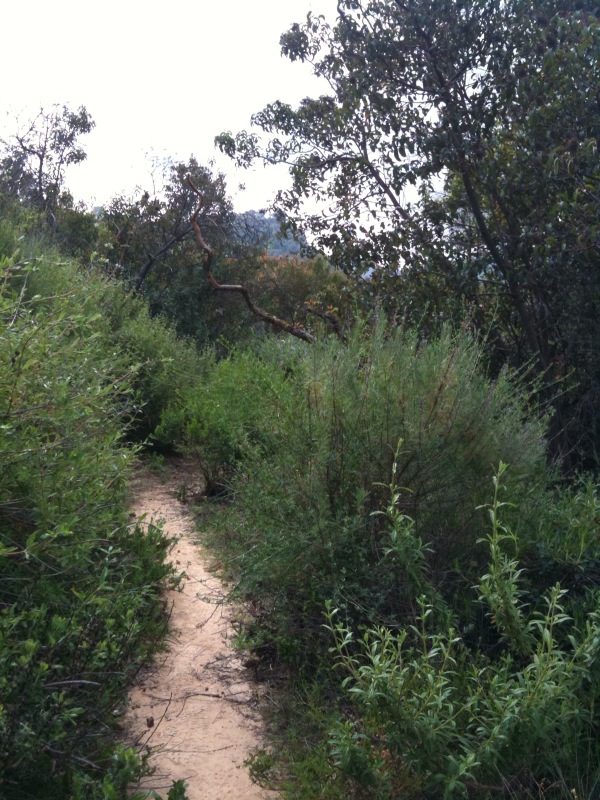The following are some general things to think about, look for and do in the garden this time of year. Even if you aren’t the gardener for your home – make sure someone is watching out for it properly. For more detailed information on monthly maintenance I strongly recommend Pat Walsh’s “Southern California Gardening a month-by-month guide” Her valuable information, along with my own experience, the below listed web sources and my trusty Western Sunset Garden Book helped me put this together. I hope it helps.
I am available for garden coaching if you’re needing some extra help or advice. Grow on!
First of all before you do anything TAKE A HIKE IN THE LOCAL MOUNTAINS! You’ll see many of our native plants in bloom. Motivation enough to incorporate some of these lovely plants into your landscape.
Planting:
- Early spring is an excellent times to get out there and plant almost anything. Wait until April for particularly tender plants such as tropical specimens.
- Now is a great time to plant citrus and avocado. Choose a variety good for your area. This link has a great list of citrus tips and articles.
- Dahlia bulbs can be planted in April. I love Dahlias for amazing summer blooms that can cut and brought inside. There’s a huge number of choices – check out http://www.dahlias.com/howtogrowdahlias.aspx for bulbs to order by mail. This link also has planting instructions.
- Tuberous begonias can be started now for gorgeous summer color. They are best in pots so snails can’t as easily ravage them.
- If you’ve always wanted a Wisteria vine, now is the time to choose one in the nursery. Keep in mind the two types: Chinese (blooms all at once) and Japanese (longer period of bloom and more fragrant). http://ohioline.osu.edu/hyg-fact/1000/1246.html will provide you with some helpful information in the care of a Wisteria vine.
- As late spring warms up the heat loving vegetables can go in. This would include artichoke, peppers, corn, green beans, tomatoes, cucumbers and squash. If you have a really warm sunny spot you can try melons, eggplant and pumpkin. I’m in coastal California so with our fairly mild summers it is sometimes hit or miss with the veggies that need the high heat. Make use of reflective heat off hardscape or a stucco wall if you need more warmth for your veggies. Remember to arrange crops so tallest won’t block sun from the shorter ones and that heat-sensitive ones (leaf crops) get some shade.
Pruning:
- Shrub and hedge pruning will be important in spring to control size and shape. Of course the best approach is to choose plants that are sized appropriately for their location.
- Often large shrubs get too “leggy” and sparse on the bottom. This is typically because the top has been allowed to get too overgrown and has shaded the bottom. Make sure this doesn’t happen by evenly thinning out the shrub to allow for light penetration.
- Select the right pruning technique based on the plant. For instance, small leaved shrubs (i.e., boxwood) can be sheared, those with larger leaves need pruning from the inside to renew growth inside-out and those that grow in vase shape (i.e., Nandina, Oleander) are best pruned by taking whole branches out from the bottom.
- For plants that bloom on new growth such as Fuchsias, Begonias, Camellias and tropical Hibiscus prune them now if you haven’t done so already. Make sure to cut into new wood to encourage growth and more fullness. If your plant is looking awkward its okay to go in and remove an entire branch that is crossing others or growing in a weird angle.
- If some of your more tender plants have suffered cold damage wait until you see signs of new growth and then trim back to that.
- Roses: by now your properly pruned roses (see winter wrap-up) are bursting at the seams. The pruning you’ll do now mainly consists of dead-heading spent flowers or cutting those you want to bring inside. Choose a 5-leaflet leaf with an outward facing bud and prune at 45 degree angle ¼” above that. You’ll want the outward facing bud so that growth is encouraged in that direction.
General Maintenance:
- For spring flowering bulbs: after they have finished blooming allow their foliage to die back naturally. You can cut back spent flowers and it’s a good idea to fertilize the plants for next years show.
- Aphids will become a problem in many gardens right now due to new tender growth. You can control them with strong busts of water from the hose and with Safer soap. In addition, for scale, aphids and thrips you can apply horticultural oil making sure rain or sprinklers don’t wash it off for a few days. Introducing beneficial insects can also help. See Santa Monica’s guidelines for fighting aphids.
- The best insurance in my book for keeping pests in check is to have a diverse garden that will attract many beneficial insects. See Santa Monica’s guidelines for introducing beneficial insects
- Make sure plant debris isn’t so piled up as to provide a habitat for snails, slugs and other nasty critters. Snails and slugs will be particularly active now so keep them in check. See Santa Monica’s guidelines for fighting snails and slugs.
- Check the mulch around your plants and replenish if necessary. Mulching will help keep down weeds, help maintain warmth and soil moisture and ultimately improve the quality of your soil. Best to keep mulch 3-4” from base or crown of plant too prevent rotting.
Watering:
- Monitor your watering this time of year especially if you turned off your water for the winter. As plants begin to experience their growth cycle their watering requirement will go up substantially.
- Invest in a smart controller that either collects weather information onsite or gets information from a weather station. There’s rebates available through Santa Monica and many other cities for smart irrigation controllers. They are well worth the expense.
- Make sure your irrigation is working properly, those spray heads can get out of whack easily. Have your drip system flushed out at least twice a year. If you don’t have a weather based timer, review your station run times and make sure everything is getting the right amount of water.
Fertilizing:
- Ideally you’ve been improving your soil’s fertility with mulch and compost so that when plants hit their stride in spring and summer they have lots to eat.
- If your soil lacks enough fertility add a thick layer of compost and cover with mulch
- A compost tea spray on the foliage and around the base of plants is a great way to improve soil fertility.
- Fertilize your lawn in spring (hopefully now you have a tiny lawn or none at all!)
- Bamboo is in the grass family so fertilize it as well in the spring with an lawn fertilizer.
- Roses are very heavy feeders so continue feeding them through Spring.
- You’ve already fertilized your Citrus in the winter. The second fertilizing should occur once it has flowered and the fruit has developed to about ½ “ in diameter.
Dividing:
- Spring is time to divide and propagate clumping plants (e.g., clumping Bamboos, Agapanthus, clumping Fescues, Phormiums, etc…) Give some plants to your neighbors and friends are fill in the voids in your own landscape.


